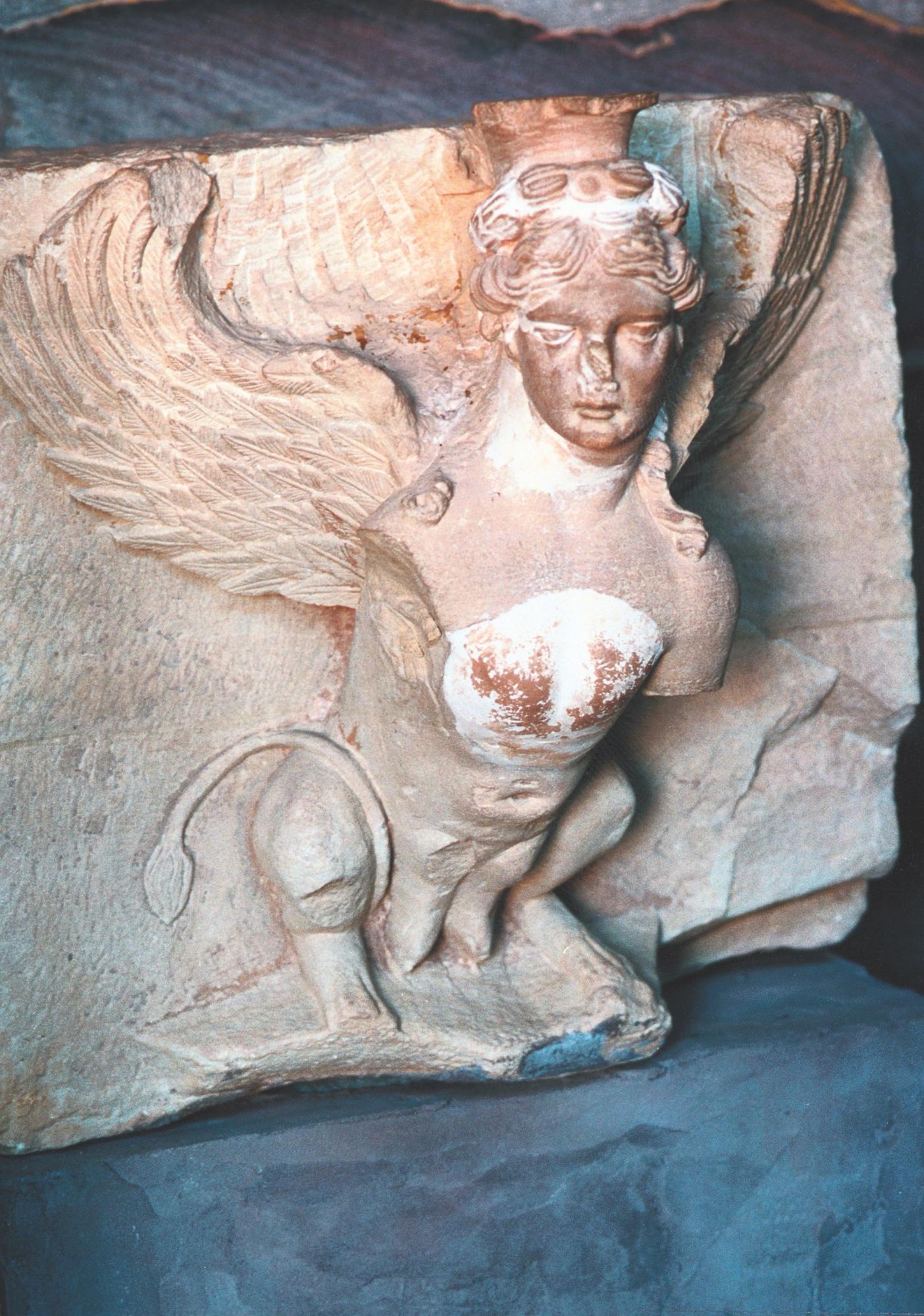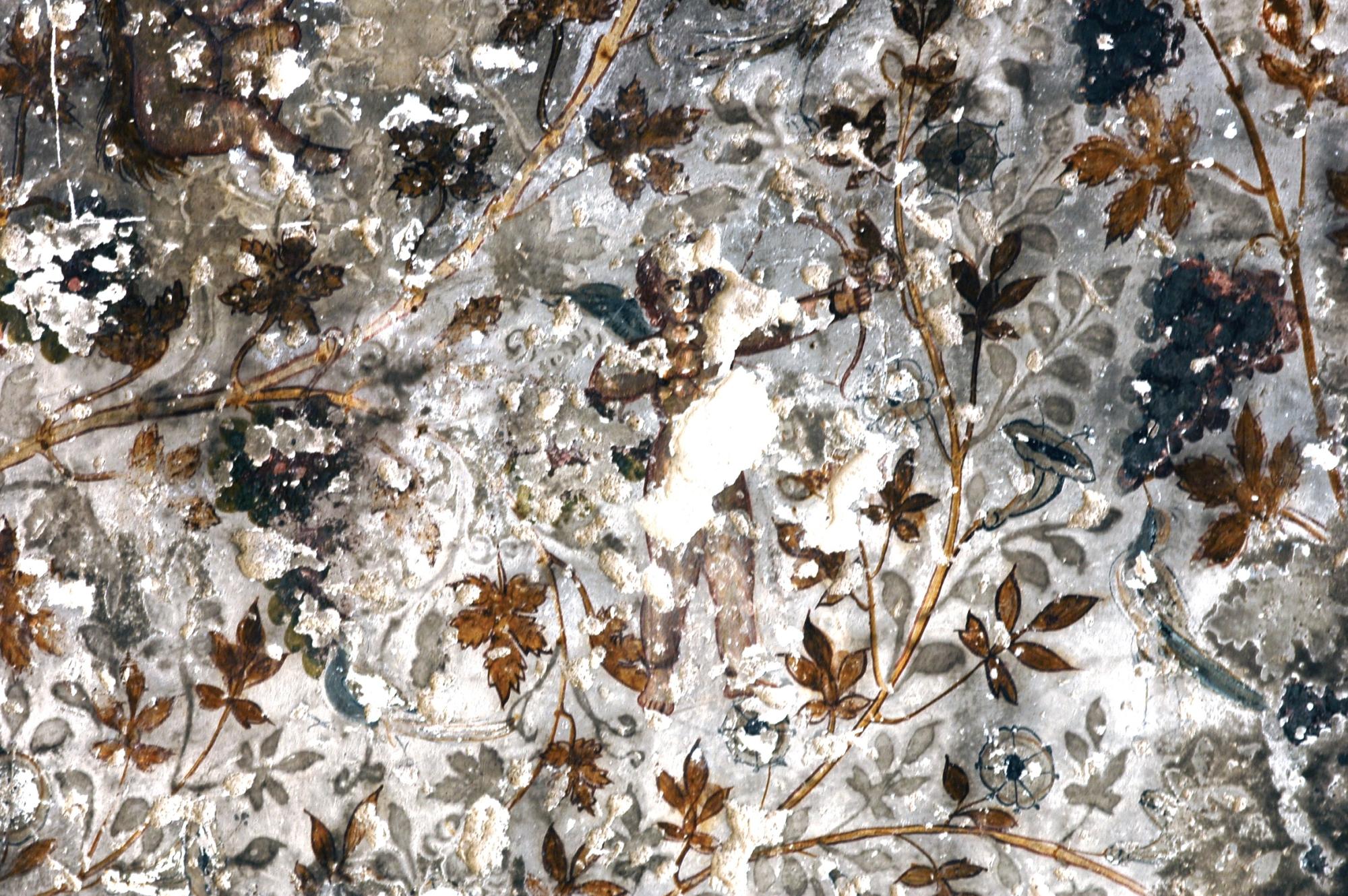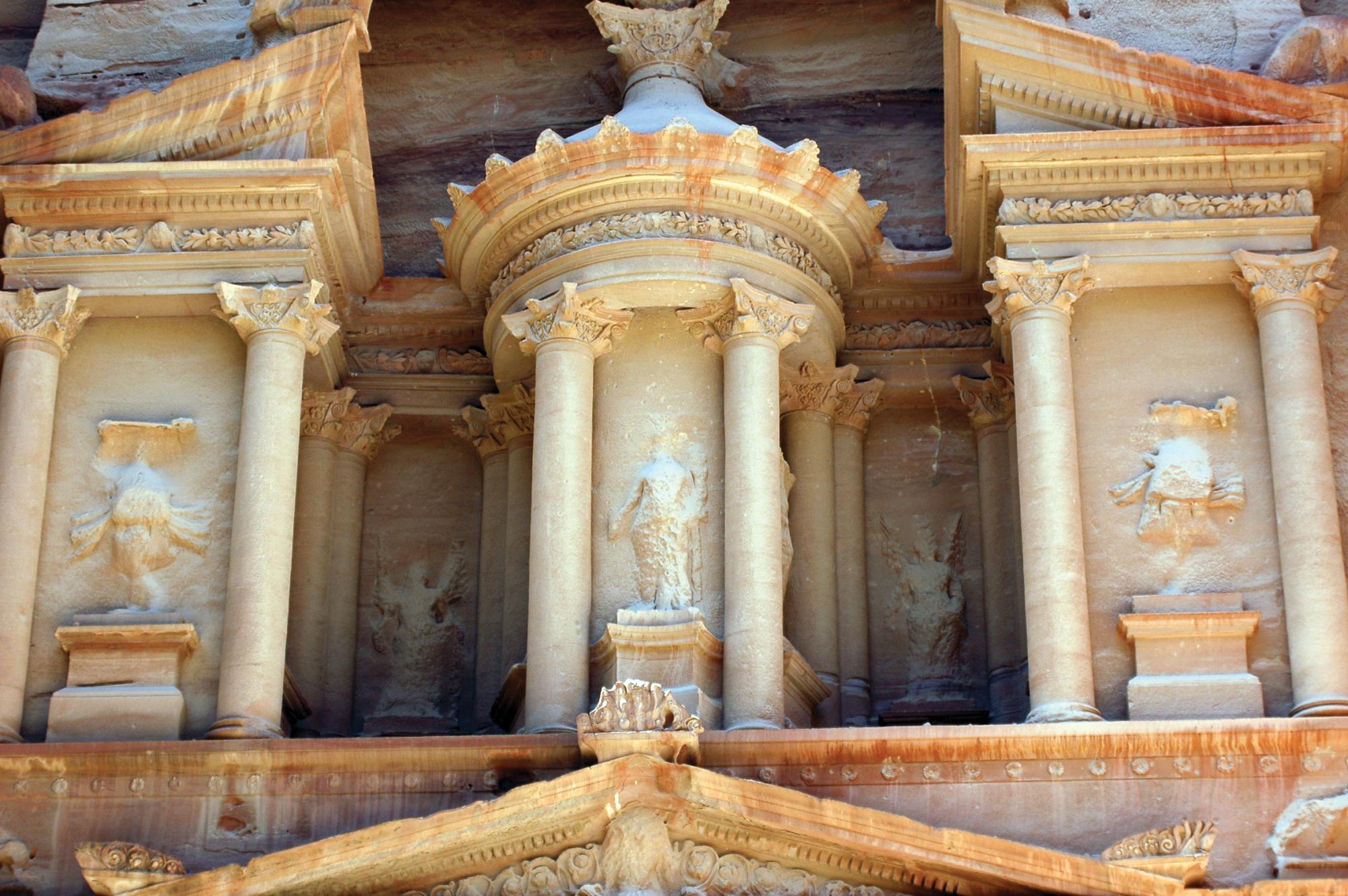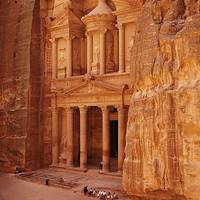The Esoteric Nabatean Mystery At Petra



Cleopatra was known to be a women alchemist. She is credited with a statement strikingly similar to the opening of the Emerald Tablet:
“Tell us how the highest descends to the lowest, and how the lowest rises to the highest”.
Moses was considered as a primary guardian of the Emerald wisdom. He was recorded as a student of Alchemy according to Tuba Philosophorum, a 12th century Latin work translated from early Hebrew and Arabic sources. Several such references exit, dating back to the 3rd century treatise entitled "The Domestic Chemistry of Moses,” and progressing to the famous 10th century Arabic “Kitab al-fihrist” by Ibn Al-Nadim.
The title of “Royal Art” was conferred upon Alchemy in Ancient Egypt, where the privilege of gold mining belonged to the Pharaoh, and the Royal House controlled every activity dealing with the precious metal. Hence, the process of making precious metals, manna, sacred bread, or alcohol was designated as a Royal Art.
The early medieval time witnessed several famous alchemists amongst intellectual Jews in Alexandria and Arab scientist in Baghdad. Alchemy, or Divine Chemistry, was the favorite science of Alexandrians, subtly blending science, art and religion. Centuries later, this knowledge was transmitted to Europe under the name “Alchemy,” in modified and obscure writings and translations.
His symbol was the caduceus or serpent-staff, which became one of many of alchemy's principal symbols. The twin serpents or the caduceus on the Nabatean stone indeed shows the Nabatean were fascinated by Alchemy.
It is said that after the flood, the great wisdom was transcribed onto an Emerald Tablets by Thoth. The Emerald Tablets, is a text purporting to reveal the secret of the primordial substance and its correspondence. Alchemical mysteries of the body derive chiefly from the ancient world and knowledge of the past. This knowledge had correlations with metals, stones, plants and astronomy - an intricate mystical science was embodied in this correspondence. Divine chemistry was the favorite science of that time.




The earliest known reference to the Nabateans as a group of people dates back to 647 BC. They were mentioned among the enemies of the last great Assyrian king Ashurbanipa. The Nabateans were known as exceptionally skilled people, facilitating commerce between China, India, the Far East, Egypt, Syria, Greece and Rome. They traded such goods as incense, medicines and perfumes. In Genesis (25:13-16) they are described as a group of nomadic Bedouin group, under the leadership of the Khedar tribe, of the tribes of Ismael (Ishmael).
Much of what is now known about the Nabatean culture comes from the writings of the Roman scholar Strabo. Strabo was a historian, geographer and philosopher, most famous for his 17-volume work Geographica, which presented a descriptive history of people and places of the world known to his era. He recorded that the Nabatean community was governed by a Royal family, but that a strong spirit of democracy also prevailed. According to Strabo, there were no slaves in Nabatean society, and all members shared work duties. The Nabatean contracts with traders were written in Aramaic.
The Nabateans built their spectacular city known today as Petra in the fourth century B.C. It was during a time when mystery religions were dominant and flourishing all over the Arabian Desert and the Mediterranean.
The city of Petra was annexed by the Romans in AD 106 and ultimately declined with the fall of the Roman Empire. At some point, probably during the fourth century C.E, the Nabateans left their capital at Petra. No one really knows why. It seems that the withdrawal was an unhurried and organized process, as very few silver coins or valuable objects have been unearthed at Petra.
By the seventh century, Petra was abandoned altogether. In the twelfth century, the Knights Templars, briefly occupied the ruined city of Petra and they were constantly searching for the Lost Ark and the Holy Grail.
Nabatean Mystery Religion
An element of this early mystery religion makes its first appearance in Genesis (14:18) during the time of Abraham, with the mysterious Wine and Bread rites. Genesis tells that Melchizedek presented Abraham with bread and wine - a ritual that seems to be the focal point in the Nabatean religious ceremonies.
As such, the ritual of communion was of particular significance to the Nabateans to be adminstrating to the other tribes because of their Neutral status. They are not Pure Ismailies nor Edomities, nor Midinites nor Israilies, but a mix of the larger tribal alliance of the Abrahamic confederation of tribes). It should be noted that the Midianites were also related to Abraham through Keturah, Abrahams last wife.
The Nabateans probably regarded themselves as a Neutral or the Lord Host tribes, with authority to carry on the Abrahamic-Melchizedek mystery rites of divin intoxication.
It is evident that the Nabateans were part of the Abrahamic tradition in which Melchizedek (Al Khader) was a prominent figure.



“And Azazel taught men to make swords and knives and shields and breastplates; and made known to them the metals [of the earth] and the art of working them; and bracelets and ornaments; and the use of antimony and the beautifying of the eyelids; and all kinds of costly stones and all coloring tinctures.”
It is said that the whole Earth has been corrupted through the works that were taught by Azazel: “to him ascribe all sin.” -1 Enoch 10:8

Although esoteric method like Kabbalah teachings dates only to the thirteenth century AC. Nevertheless, the Nabateans stones and esoteric symbolism provides an important insight as to how this form of mysticism or spiritual science was practised, and the Nabateans were masters or gardians of such knwoledge or spiritual science.
The Nabateans lived a communal life of sharing, their king was addressed as 'brother', and they refused to keep slaves. They were an exceptionally gentle people.
Diodorous Siculus tells us of their beliefs:
"They have no poor amongst their kind, they honour the meek and dispossessed, and value mercy, peace and forgivness of transgressions."
Diodorus Siculus also, writing in the first century BC, speaks of a clan amongst the Nabateans who lived outside mainstream society in the surounding mountains.
"These people are ruled by their own king, but all are equal in his sight and he is called by them "brother". they are eceedingly learned and there are many philosophers amongst them. the women are treated as equal...Although they welcome travellers, they do not permit their sons and daughters to marry outside their caste, believing their blood belongs to their god...they do not keep slaves and are much inclined to share their possessions....they are forbidden to consume the blood of animals and must first prepare the carcass by ritual draining..."
Here we have a remarkable similarity of a secret journey Jesus made at an early stage of his life. Two of the New Testament gospels fail to say where Jesus was before his babtism and the event that took place in Jerusalem: the two have a mysterious gap in Christ's life between the age of 12-30. A number of historians have suggested that Jesus spent these missing years as an Essene. The Essene lived by the Dead Sea and they tried to stay away from big cities.
The work of the Roman historian Strabo suggests that the Essenes were in Petra around the time Jesus was born. He records that somewhere about the year 10 BC, when the Nabatean king Obodas II tried to over tax his people, there were many groups in Petra who opposed the king. Of one of these, Strabo writes:
"The Esser sect of the Jews, who were treated better here than they were by herod in judea, were most incensed. for they claimed to have no belongings, being sworn to povert in such matters."
''The Arabs love freedom, they live under the open sky, and have chosen a country without sources and rivers. They neither grow corn or trees, they do not drink wine, and they build no houses. Infringers are punished with death. Some tribes have camels, others small cattle".
''One tribe, the Nabateans, with only 10,000 men, are famous for their riches. They sell incense, myrrh and other spices to the Mediterranean countries, and get these merchandises from Arabia Felix in the south. Their country, without water, is impenetrable to enemies, but the Nabateans possess cisterns to collect rain- water, the place of which is known only to the inhabitants of the country. Their animals are watered every three days to accustom them to a flight throughout a waterless country. They eat meat and drink milk, also pepper and a resin diluted with water."
Strabo's Account of the Nabateans:
''The houses are sumptuous and of stone. The cities are without walls, on account of the countryís peace [which prevails among them]. A great part of the country is fertile, and produces everything except the oil of olives; [instead of it] the oil of sesame is used. The sheep have white fleeces, their oxen are large; but the country produces no horses. Camels are the substitute for horses, and perform the [same kind of] labour. They wear no tunics, but have a girdle about the lions, and walk abroad in sandals. The dress of the kings is the same, but the colour is purple''.
''Some of their merchandise is imported into the country. Others are not altogether imports, especially as some articles are native products, such as gold and silver, and many of the aromatics; but brass and iron, purple garments, styrax, saffron, and white cinnamon, pieces of sculpture, paintings, statues, are not to be procured in the country''.
''They look upon the bodies of the dead as no better than dung. According to the words of Heracleitus, "dead bodies are more fit to be cast out than dung", wherefore they bury even their kings beside dung-heaps. They worship the sun, and construct an altar on the top of a house, pouring out libations and burning frankincense upon it every day''.
''The Nabateans are prudent, and fond of accumulating property. The community would fine a person who has diminished his substance, and confers honours on him who has increased it. They have slaves, and are served for the most part by their relations, or by one another, or each person is his own servant; and this custom extends even to their kings. They eat their meals in companies consisting of thirteen persons, each party being attended by two musicians. But the king provides much entertainment in great buildings. No one drinks more than eleven [appointed] cupfuls, from separate cups, each of gold’'.
(Their contracts with traders were done in Aramaic).
In the biblical tradition, Melchizedek, the priest of the most high God, appeared to Moses during his journey, 600 years after Abraham. So who is this mysterious immortal figure?
According to Islamic tradition, Melchizedek, known in Arabic as Al Kha’der or Al Khidr, along with Enoch (Arabic: Idris) are of the few blessed figures in history who never died as such. Instead, they were elevated to Heaven directly in their bodies, and thus can return to this world at will. According to the Qur'an (Chapter 18) Al Kha’der is the mysterious, immortal figure that Moses encountered at the place where the “two Seas” meet.

A half lion/half woman Nabatean statue found in Petra. In esoteric symbolism the Lion has always been considered as a symbol of cosmic Fire, that fire force which pulsates throughout the Universe and is the hidden life of MINERAL, PLANT, ANIMAL, and MAN. Thus the half Lion/half man or woman represents initiation by fire. It was believed that once a person is in control of this fire force, one enters a life of harmlessness and purity. In early times, when men lived in much closer attainment with the spiritual realms than at the present, it was necessary that the Holy Men, religious or spiritual leaders become initiate before being anointed to their high status.The cosmic fire force within man, is symbolized by the Lion.


